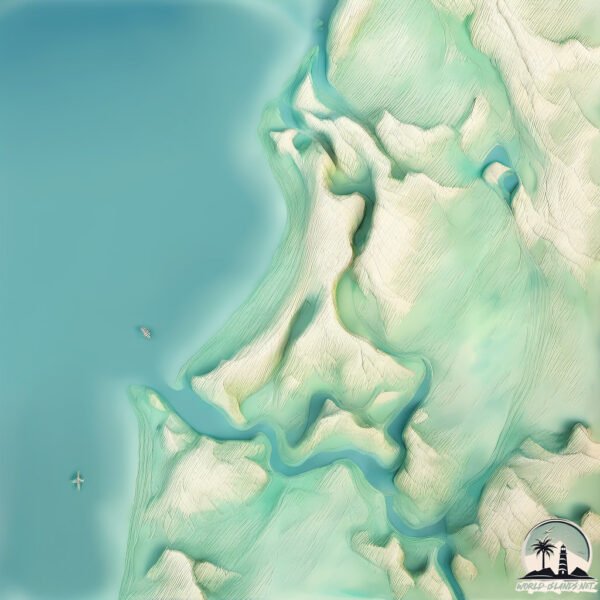Welcome to Wallaby Island , a Tropical island in the Arafura Sea, part of the majestic Indian Ocean. This guide offers a comprehensive overview of what makes Wallaby Island unique – from its geography and climate to its population, infrastructure, and beyond. Dive into the details:
Geography and size of Wallaby Island
Size: 62.2 km²Coastline: 66.4 kmOcean: Indian OceanSea: Arafura SeaContinent: Oceania
Wallaby Island is a Medium Island spanning 62 km² with a coastline of 66 km.
Archipel: –
Tectonic Plate: Somalia – A large tectonic plate covering the Horn of Africa and parts of the Indian Ocean, known for the East African Rift where it’s splitting away from the African Plate.
The geographic heart of the island is pinpointed at these coordinates:
Climate and weather of Wallaby Island
Climate Zone: TropicalClimate Details: Tropical Savanna, WetTemperature: Hot
Climate Characteristics: Defined by distinct wet and dry seasons with high temperatures year-round. Pronounced rainfall occurs during the wet season, while the dry season is marked by drought.
Topography and nature of Wallaby Island
Timezone: UTC+10:00Timezone places: Australia/SydneyMax. Elevation: 10 m Mean Elevation: 5 mVegetation: Open WoodlandTree Coverage: 30%
The mean elevation is 5 m. The highest elevation on the island reaches approximately 10 meters above sea level. The island is characterized by Plains: Flat, low-lying lands characterized by a maximum elevation of up to 200 meters. On islands, plains are typically coastal lowlands or central flat areas.
Dominating Vegetation: Open Woodland
Vegetation: 10 vegetation zones – Very Highly Diverse Island
Infrastructure and Travelling to Wallaby Island
Does the island have a public airport? no .
Does the island have a major port? no .
The mean population of Wallaby Island is 0 per km². Wallaby Island is Uninhabited. The island belongs to Australia .
Continuing your journey, Lingnoonganee is the next notable island, situated merely km away.
Searching for the MYSTERIOUS Wild Wallabies of Scotland
Today we go on a mission we have been planning for months, we head to an island in the middle of a loch in Scotland which is ...
Searching for the MYSTERIOUS Wild Wallabies of Scotland
Today we go on a mission we have been planning for months, we head to ...
Today we go on a mission we have been planning for months, we head to an island in the middle of a loch in Scotland which is ...
Wallabies in Scotland? INCREDIBLE ADVENTURE to Inchconnachan Island
In this video, I search for Wallabies on Scotland's enchanting Island ...
In this video, I search for Wallabies on Scotland's enchanting Island of Inchconnachan. Nestled in the serene waters of Loch ...
Wallaby Island
Chris Lilley searches day and night on an island for the rare Tammar ...
Chris Lilley searches day and night on an island for the rare Tammar Wallaby. This is THE OFFICIAL CHRIS LILLEY YouTube ...
Australia is classified as Developed region: nonG7: Developed economies outside of the Group of Seven, characterized by high income and advanced economic structures. The level of income is High income: OECD.
News – Latest Updates and Headlines from Wallaby Island
Stay informed with the most recent news and important headlines from Wallaby Island. Here’s a roundup of the latest developments.
Loading...
Please note: The data used here has been primarily extracted from satellite readings. Deviations from exact values may occur, particularly regarding the height of elevations and population density. Land area and coastline measurements refer to average values at mean high tide.

